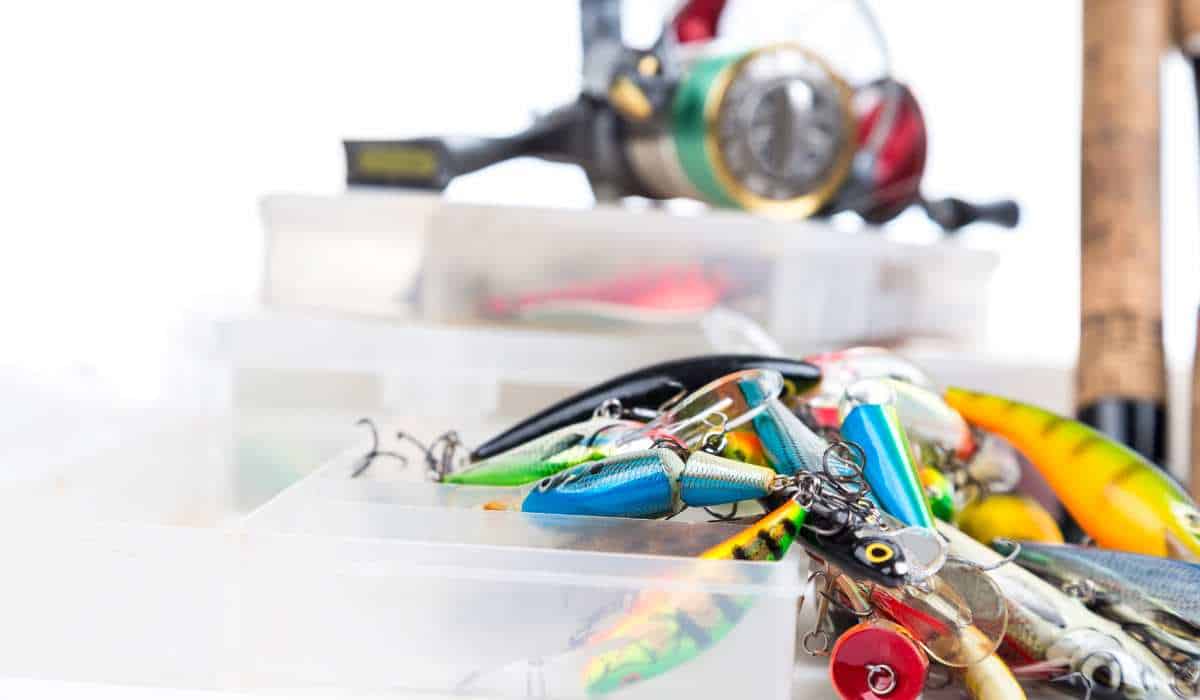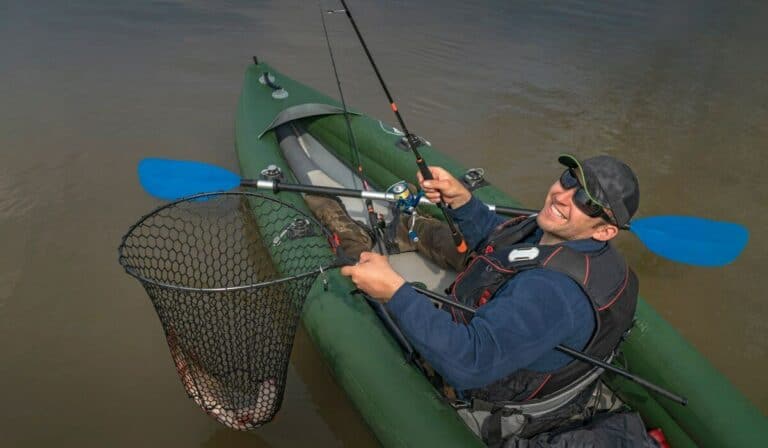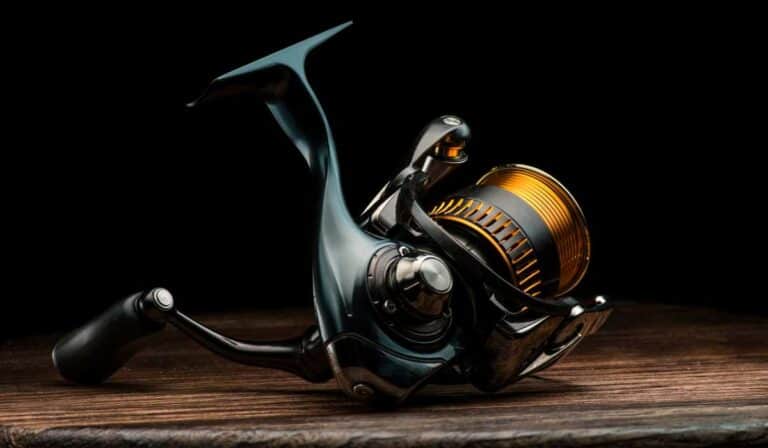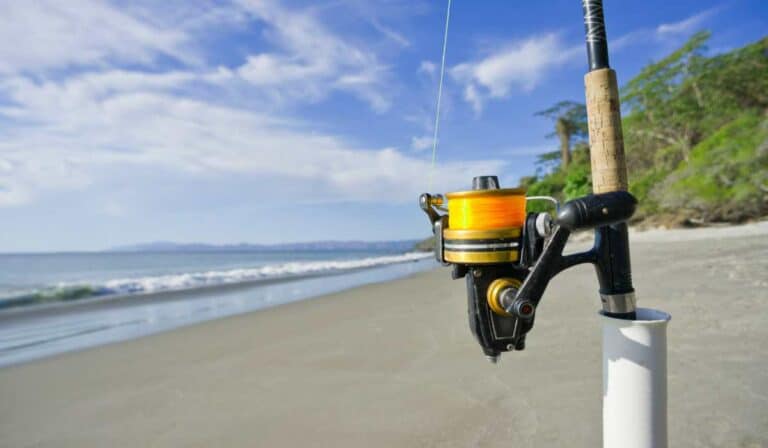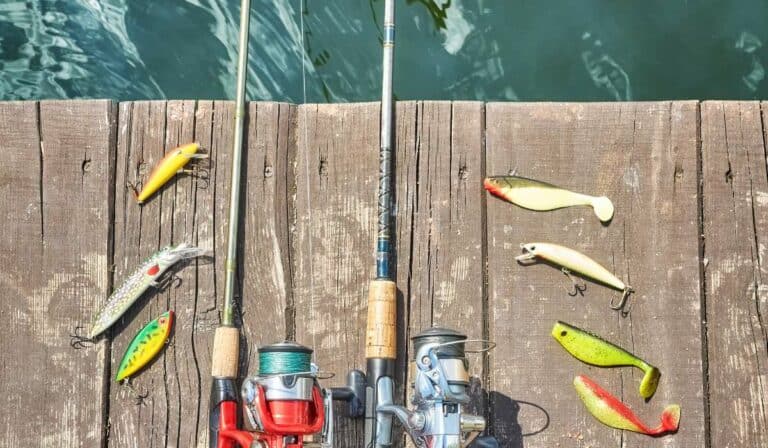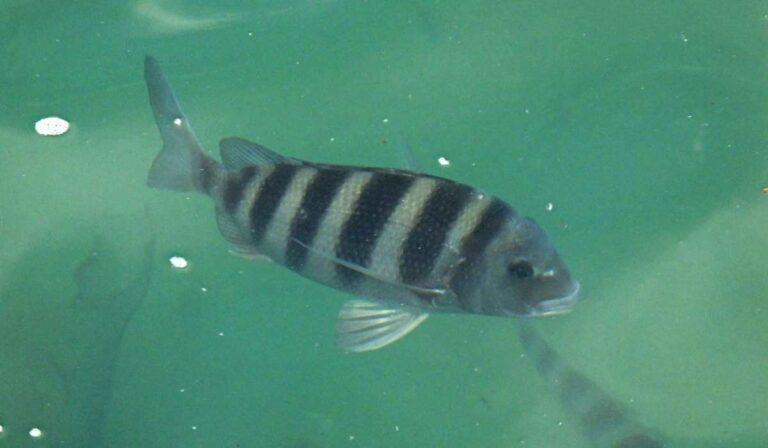The Best Lures and Baits for Surf Fishing Success
Exploring the optimal baits and lures for surf fishing can be a game-changer for fishermen looking to increase their catches in coastal waters. To make the most of coastal fishing, having an appropriate selection of lures and baits is essential.
In this blog post, we’ll delve into various types of bait that are effective for surf fishing, as well as discuss how to choose the perfect lure or bait based on factors such as tide and targeted species. We’ll also share tips on using these lures and baits effectively, ensuring you maximize your chances of reeling in those prized catches.
Avoid common mistakes when utilizing lures and baits by understanding their proper usage in different situations. By mastering these techniques, you’ll be well-equipped with knowledge on the best lures and baits for surf fishing – ultimately enhancing your overall angling experience along our beautiful coastlines.
Table of Contents
1. What Are the Best Lures and Baits for Surf Fishing?
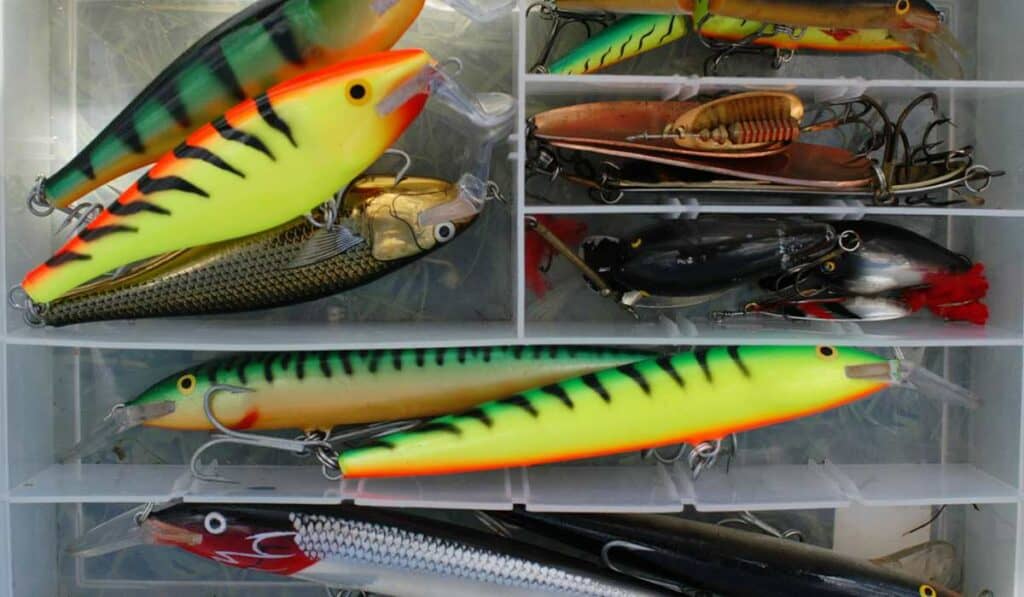
Surf fishing is an enjoyable way to connect with nature while also giving you the opportunity to catch some delicious fish. In this section, we’ll dive into the best lures and baits for surf fishing so that you can maximize your chances of success.
There are countless lures and baits available on the market, but not all of them will be effective in every situation. To help narrow down your choices, it’s essential to consider factors such as water conditions, targeted species, and personal preferences when selecting your bait or lure.
- Natural Baits: Live or dead natural baits like shrimp, sand fleas (mole crabs), clams, squid, or cut baitfish are often very effective at attracting various fish species in the surf zone. These options closely resemble what many fish feed on naturally in their environment.
- Artificial Lures: There are numerous artificial lures designed specifically for surf fishing including spoons, poppers, plugs, jigs, soft plastics, and swimbaits, among others. Depending on conditions, these can prove extremely productive in enticing strikes from predatory gamefish such as striped bass, bluefish, red drum, flounder, snook, tarpon, and even sharks.
In order to choose the most suitable lure or bait for your next surf fishing adventure, visit our comprehensive guide on choosing the right bait or lure based on specific situations by clicking the link below. Happy casting.
Surf angling can be a wonderful means to relish the outdoors and land some delectable fish. With the right lures and baits, you can make sure that your next surf fishing trip is successful. Next, let’s explore the various lures and baits used for surf fishing to increase your chances of success.
Click here to read Discover the Best Jackets for Ice Fishing
2. Types of Bait for Surf Fishing
Surf fishing is an exhilarating and rewarding pastime that offers a wide range of bait choices to help you snag your catch. It’s essential to be aware of the various bait choices and when they should be used in order to maximize your surf fishing experience.
Live Bait: Live bait is often considered the most effective option for surf fishing as it closely mimics natural prey. Some popular live baits include sand fleas, shrimp, mullet, and bloodworms. These can be purchased at local bait shops or caught on-site using specialized equipment like cast nets or sand flea rakes.
- Sand Fleas: Also known as mole crabs, these small crustaceans are a favorite among fish species such as pompano and whiting.
- Bloodworms: Bloodworms are highly sought after by fish due to their strong scent and high protein content. They work well for targeting striped bass, redfish, and flounder.
Natural Baits: Natural baits consist of dead or preserved organisms that still retain their scent and flavor. Cut bait (chunks of fish), squid strips, clam necks, or crab pieces can all be used effectively in surf fishing situations. These baits attract predators through smell rather than movement.
Artificial Lures: Artificial lures offer versatility in size, color patterns, and action to mimic various prey species. Some popular surf fishing lures include spoons, jigs, plugs, and soft plastics. These can be used in combination with natural baits or on their own.
- Spoons: Metal spoons imitate the flash of baitfish as they swim through the water column, attracting predatory fish like bluefish and mackerel.
- Jigs: Jigging is an effective technique for targeting bottom-dwelling species such as flounder and red drums using weighted hooks paired with soft plastic bodies that resemble shrimp or small fish.
When surf fishing, it’s important to pay attention to the tide and time of day. Low tide is often the best time to fish as it exposes more of the beach and allows for easier access to deeper water. Additionally, using the right gear, such as bucktail jigs, circle hooks, and diamond jigs, can increase your chances of catching game fish like Spanish mackerel.
Whether you’re a seasoned angler or new to the sport, experimenting with different types of bait and lures can help you catch fish and make the most out of your surf fishing experience. So, head to your local bait and tackle shop, grab some frozen shrimp or live shrimp, and hit the Gulf Coast for a day of fun in the sun and surf fishing.
Surf fishing requires the right type of bait to be successful, and this article has provided an overview of some popular baits for surf fishing. The next heading will discuss how to choose the best lure or bait that suits your needs.
Key Thought:
To maximize your surf fishing experience, it’s important to understand the different types of bait available such as live bait (sand fleas, shrimp, mullet and bloodworms) or natural baits (cut fish chunks, squid strips and crab pieces). Artificial lures like spoons and jigs can also be used effectively in combination with natural baits or on their own. Paying attention to the tide and time of day is crucial when surf fishing.
3. Choosing the Right Lure or Bait
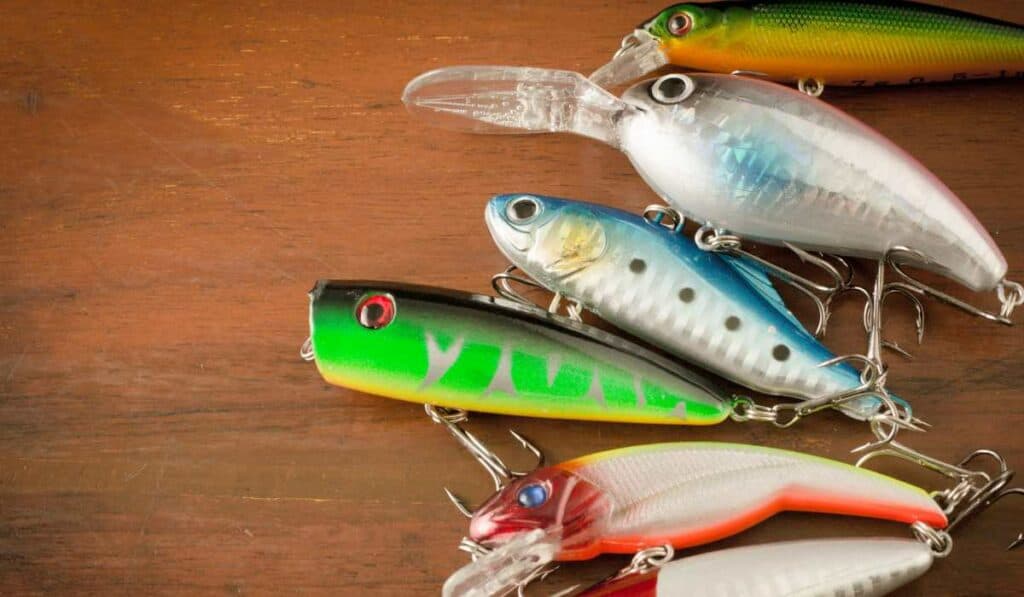
Selecting the correct lure or bait for surf fishing can be a major factor in success, so it is important to take into account factors such as the type of fish sought, water conditions and individual preferences. Here are some tips to help you make an informed decision:
A. Target Species
First and foremost, identify your target fish species. Different fish have varying tastes and feeding habits; knowing what they’re attracted to will increase your chances of success.
- Predatory Fish: For aggressive predators like striped bass or bluefish, use artificial lures such as plugs, spoons, or poppers that mimic their natural prey.
- Bottom Feeders: If targeting bottom feeders like flounder or red drum, opt for live bait (e.g., shrimp) on a jig head or Carolina rig.
B. Water Conditions
The clarity and temperature of the water play crucial roles in determining which lure colors work best. In clear waters with good visibility, natural-colored lures tend to perform better. In murky waters with low visibility, brighter-colored lures stand out more effectively.
C. Personal Preferences & Experience Level
Your comfort level using specific types of baits is also important when making your choice – if you’re new to surf fishing, start with simple lures like spoons or jigs before moving on to more complex options. As you gain experience and confidence, experiment with different surf fishing lures to find your personal favorites.
Choosing the right lure or bait is essential for a successful surf fishing trip. Having the right information and comprehending how to utilize lures and baits properly can help boost your odds of catching more fish.
Click here to read Lake Jennings Fishing: Ultimate Guide
4. How to Use Lures and Baits Effectively
Using lures and baits effectively while surf fishing can significantly increase your chances of catching fish. Here are some techniques that will help you make the most out of your chosen bait or lure:
Casting
Casting is a crucial skill in surf fishing, as it allows you to reach far-off areas where fish may be feeding. Practice casting with different types of lures and baits to find what works best for you.
Trolling
Trolling involves dragging a lure behind a moving boat or kayak, which can entice fish into biting. Troll at various speeds and depths, adjusting based on the species you’re targeting.
Jigging
Jigging is an effective technique for enticing bottom-dwelling species like flounder or halibut. Drop your jig down near the ocean floor, then jerk it up quickly before letting it fall back down again.
Bottom Bouncing
To catch fish that feed close to the bottom, try bottom bouncing. Cast out your baited rig so that it lands on the seafloor; then slowly reel in while keeping contact with the bottom. This will help you detect bites and avoid snags.
Test out a range of methods until you locate the one that yields ideal results for your specific species and environment. Happy surf fishing.
By understanding the basics of lures and baits, you can effectively increase your chances of catching more fish. Achieving greater success when fishing in the surf can be accomplished by utilizing a few helpful pointers on proper lure and bait use.
5. Tips for Catching More Fish with Lures and Baits
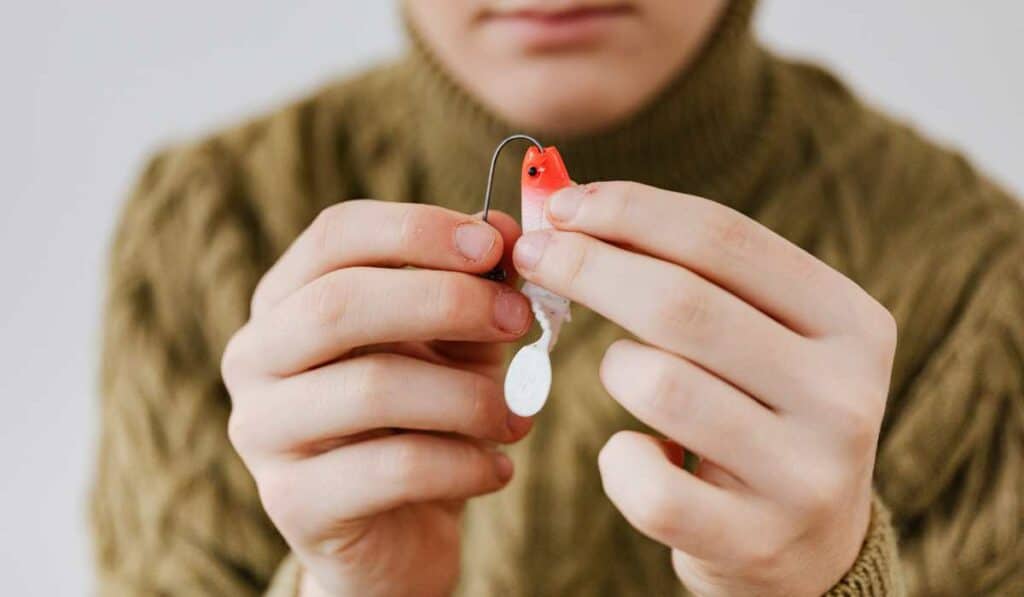
Maximize your surf fishing success by following these helpful tips when using lures and baits:
- Match the hatch: Observe the natural prey in the area you’re fishing, such as baitfish or crustaceans, and choose a lure that closely resembles their size, shape, and color. This will increase your chances of attracting fish.
- Fish during prime times: Surf fish are more active during certain periods like early morning or late afternoon. Additionally, try to plan your trips around tide changes since this is when many species feed more actively. Tide charts can help you determine the best time to go surf fishing.
- Vary your retrieval speed: Experiment with different retrieval speeds while casting lures to find what works best for attracting fish on any given day.
- Maintain proper gear maintenance: Your equipment plays a significant role in successfully catching fish; make sure it’s clean and well-maintained before each outing.
Avoid Spooking Fish
Fish can be easily scared away by sudden movements or noise near their feeding grounds. Here are some ways to minimize disturbances while surf fishing:
- Maintain a low profile: Avoid standing tall on shorelines where possible; instead, crouch down so you don’t cast an intimidating shadow over the water.
When it comes to choosing the best lures and baits for surf fishing, there are many options available. Here are some of the most popular:
Artificial Lures
Artificial lures are designed to mimic the movement and appearance of live bait. Some popular types of artificial lures for surf fishing include:
- Bucktail Jigs: These jigs are versatile and can be used to catch a variety of game fish. They work best when fished near the bottom and jigged up and down.
- Diamond Jigs: These lures are long and slender and are designed to imitate sand eels. They work well for catching striped bass and other game fish.
Bait
Live and frozen bait can also be effective for surf fishing. Some popular types of bait include:
- Live Shrimp: Shrimp is a popular bait for surf fishing, especially on the Gulf Coast. They can be fished on a circle hook or a jighead.
- Frozen Shrimp: Frozen shrimp can be used as a backup option when live bait is not available. They can be fished on a circle hook or a jighead.
- Sand Fleas: These small crustaceans are a favorite food of many surf fish species, including pompano and redfish. They can be collected from the surf zone or purchased at bait shops.
When choosing lures and baits for surf fishing, it’s important to consider the species of fish you’re targeting and the conditions you’ll be fishing in. By following the tips above and experimenting with different lures and baits, you’ll be well on your way to catching more fish on your next surf fishing trip.
By employing certain techniques when fishing with lures and baits, you can boost your likelihood of catching fish. Yet, it is essential to be mindful of typical missteps made when utilizing these strategies for attaining the best outcomes.
Click here to read The 7 Best US States for Fly Fishing
6. Common Mistakes When Using Lures and Baits
Surf fishing can be a thrilling endeavor, yet it is paramount to dodge frequent missteps when utilizing lures and baits for the most favorable outcome. Here are some pitfalls you should steer clear of:
- Using the wrong lure or bait for the target species: It’s crucial to match your lure or bait choice with the fish species you’re targeting. Research which lures work best for specific fish in your area.
- Ignoring water conditions: Water clarity, temperature, and current all play a role in how effective your lure or bait will be. Adjusting your approach based on these factors can greatly improve results.
- Poor casting technique: In surf fishing, distance matters. Ensure that you have proper casting techniques by practicing regularly and watching instructional videos like this one on surfcasting techniques.
- Failing to maintain gear: Regularly inspecting and cleaning your equipment is vital for optimal performance. Check out this guide on how to properly clean and maintain your fishing reel.
- Neglecting local regulations: Always familiarize yourself with local rules regarding size limits, catch limits, protected areas, etc., before hitting the beach. Visit your state’s fishing regulations website for up-to-date information.
Avoiding these common mistakes will help you have a more enjoyable and successful surf fishing experience.
It is imperative to be cognizant of the usual errors when using lures and baits in order to guarantee a prosperous fishing outing. In summary, to guarantee a pleasant experience when fishing, it is critical for anglers to understand and stay away from these errors. Moving forward, we will explore different techniques that can help you become more successful at surf fishing with lures and baits.
Click here to read The Best Baits for Deep Sea Fishing
FAQs Best Lures and Baits for Surf Fishing
What lure is best for surf fishing?
The best lure for surf fishing depends on the target species and local conditions. However, some popular options include metal spoons, bucktail jigs, soft plastic swimbaits, and topwater plugs. Experiment with different lures to find what works best in your specific location and situation.
What is the best bait for surf fishing at night?
Fresh-cut bait like mullet or squid can be highly effective when surf fishing at night because they release a strong scent that attracts fish in low-light conditions. Live shrimp are also an excellent choice as they emit vibrations that predatory fish can detect through their lateral line system.
What is the best bait for surf fishing on the Gulf Coast?
In the Gulf Coast region, live baits such as shrimp, finger mullet, and croakers are commonly used due to their abundance and effectiveness in attracting various gamefish species like redfish, speckled trout, flounder, and pompano. Cut bait from locally available fish can also work well.
How do you fish top water in the surf?
To effectively use topwater lures while surf fishing:
– Select a suitable topwater plug or popper designed specifically for
saltwater use
– Fish during early morning or late afternoon hours when predators
feed near the surface
– Maintain a steady retrieval speed with occasional pauses to mimic
injured prey movements
– Pick areas where waves break over sandbars or structures providing
ambush points for predator fish
When surf fishing, it’s important to have the right gear. Anglers fishing for game fish like striped bass should use a sturdy rod with a sensitive tip to detect bites. Circle hooks are a popular choice as they are less likely to cause injury to the fish and increase the chances of a successful catch. Tackle shops and bait shops can provide advice on the best gear for your specific needs.
Artificial lures can be just as effective as live bait when surf fishing. Diamond jigs are a versatile option that can be used to catch a variety of species. Bucktail jigs are another popular choice, especially during low tide when game fish are closer to shore. Sand fleas and frozen shrimp can also be used as bait alternatives.
Whether you’re a seasoned angler or a beginner, surf fishing can be a fun and rewarding experience. Don’t forget to check local regulations and obtain any necessary permits before heading out. Happy fishing.
Conclusion
After reading this article, you should have a better understanding of the best lures and baits for surf fishing. Whether you prefer artificial lures or live bait, there are many options to choose from depending on your target game fish and location. It’s important to choose the right lure or bait and use it effectively in order to increase your chances of catching fish.

